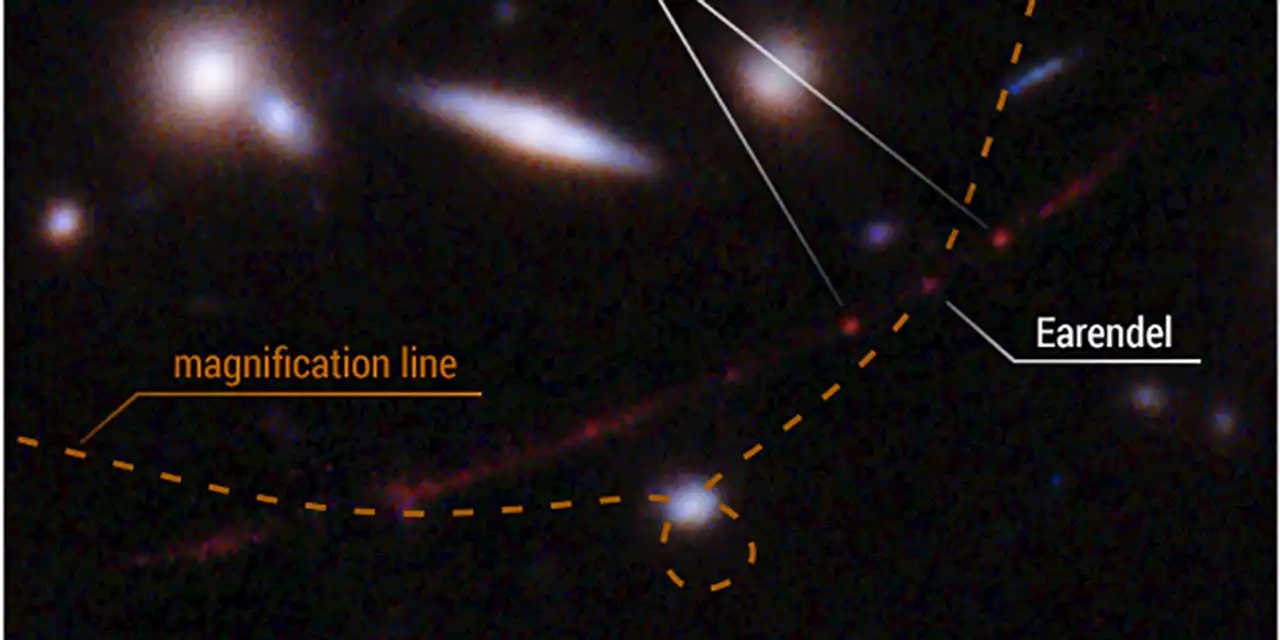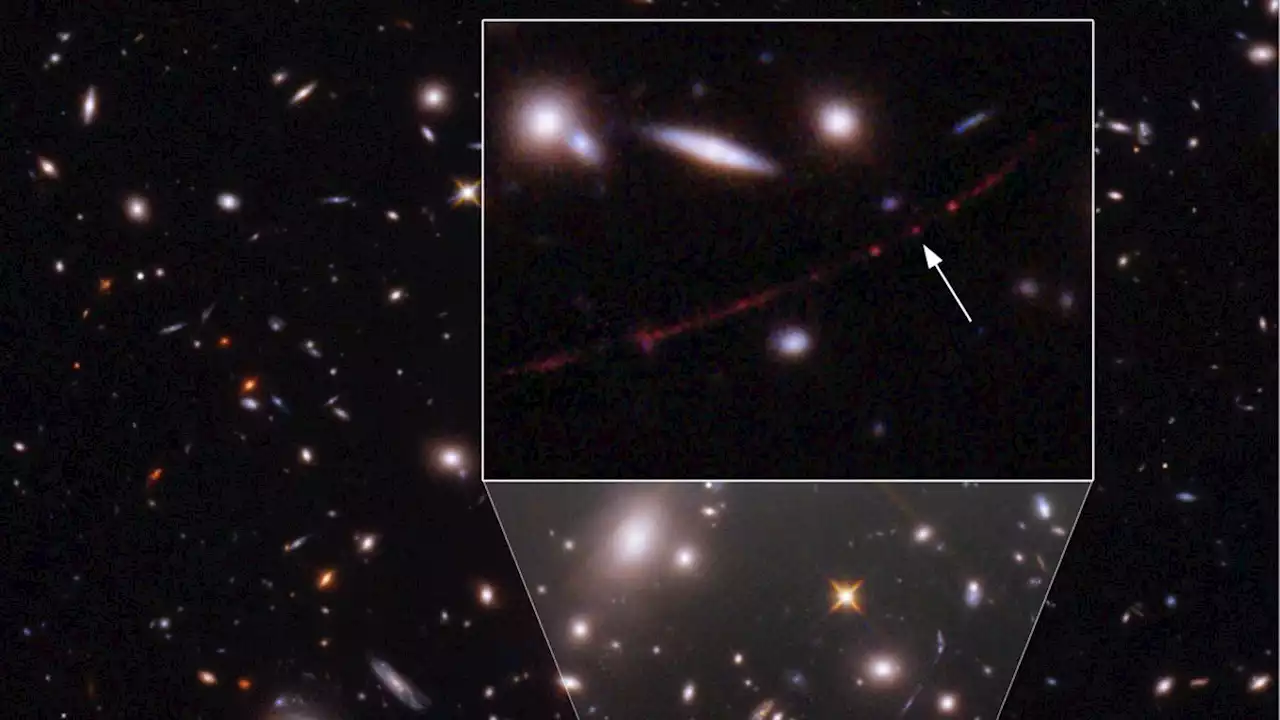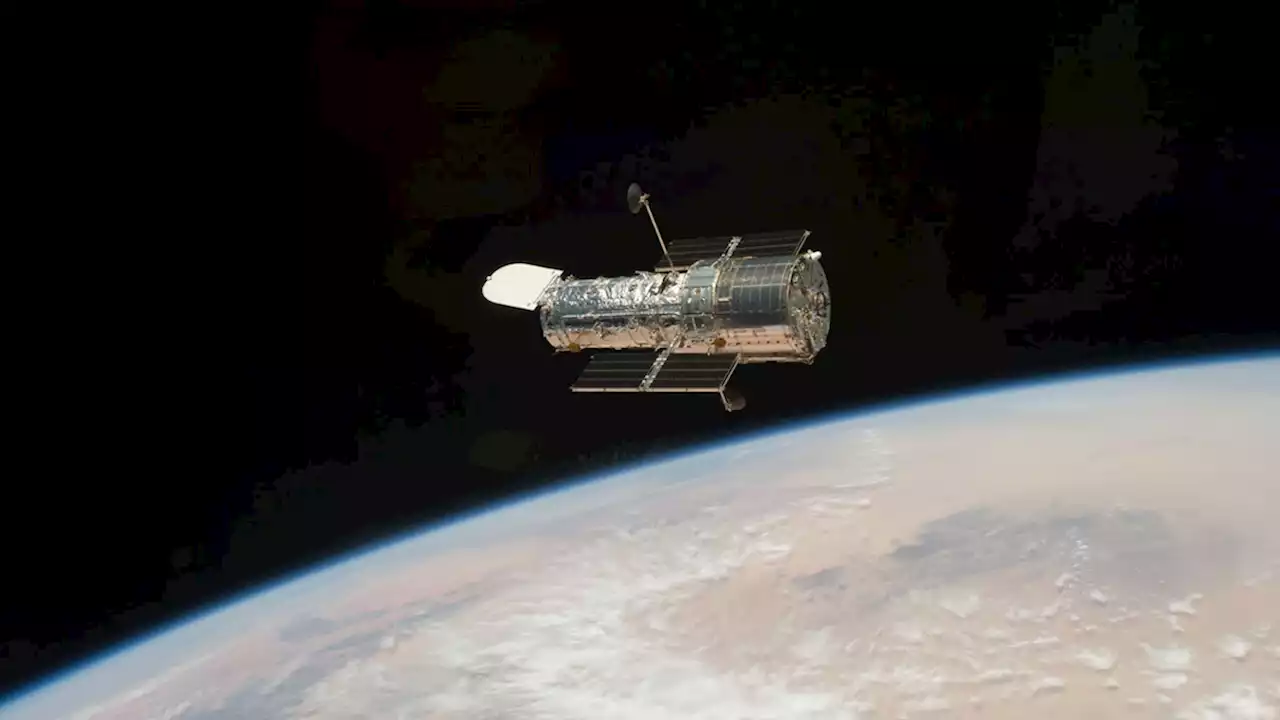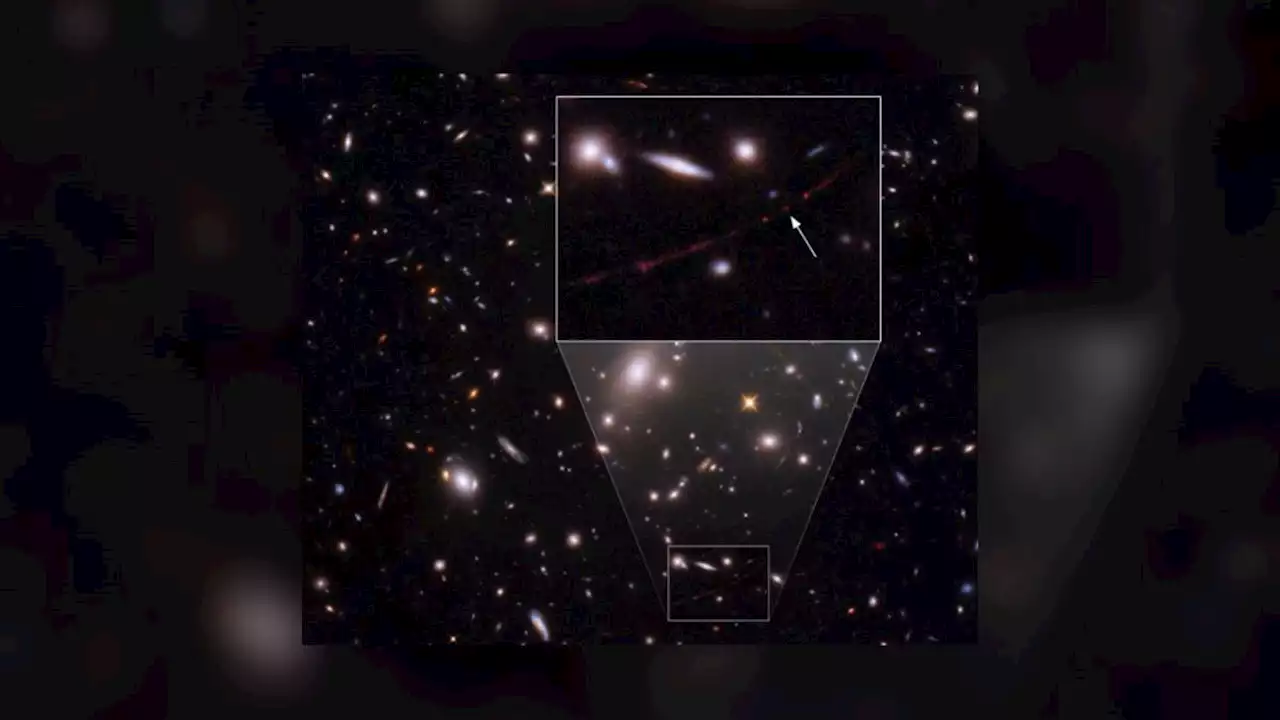The star was named Earendel, meaning \u0027morning star,\u0027 which was also inspired by a character in J.R.R. Tolkien\u0027s \u0027The Silmarillion.\u0027
In recent decades, astronomers have seen galaxies at that distance, and even farther away, but galaxies are collections of billions of stars and the very distant ones have typically been nothing more than smudges of light.
What it definitely is, is a target for the newly launched James Webb Space Telescope, the Hubble’s successor. The Webb is parked in a solar orbit that keeps it roughly 1 million miles from Earth, and it is in the midst of a calibration and commissioning phase, with the first scientific observations still a few months away.
The new report describes how Earendel was detected with the aid of gravitational lensing — a phenomenon in which a closely grouped cluster of galaxies warps the space around it to magnify, distort and sometimes duplicate objects behind it. In this manner, the Hubble Space Telescope exploits a natural cosmic magnifier.
“We saw it, and at first I kind of figured it was just a very small star cluster,” Welch said. “The more I tried to model what its intrinsic properties might be, it just kept coming up that it was much smaller than a star cluster. Based on its brightness, it was more consistent with being a massive star.”
In the case of Earendel, astronomers calculate that its light has taken about 12.9 billion years to reach us. Thus, we see the object as it existed 12.9 billion years ago.Article content “Galaxies were just starting to form around that time. So you wouldn’t have the big, beautiful spiral galaxies that we see nearby today. You would have had a lot of chaotic, clumpy galaxies,” Welch said.
Ireland Latest News, Ireland Headlines
Similar News:You can also read news stories similar to this one that we have collected from other news sources.
 Hubble Space Telescope Spots Most Distant Star Ever SeenCalled Earendel, the star is nearly 13 billion light-years from Earth
Hubble Space Telescope Spots Most Distant Star Ever SeenCalled Earendel, the star is nearly 13 billion light-years from Earth
Read more »
Hubble discovers most distant star ever seen, setting stage for James Webb Space TelescopeThe Hubble Space Telescope has detected light from a star that formed 1 billion years after the Big Bang, making it the most distant star ever observed and setting the stage for what the James Webb Space Telescope might soon discover.
Read more »
 Hubble Space Telescope Spots Most Distant Star Ever SeenThe Hubble telescope snapped an image showing the most distant individual star ever seen. Dubbed Earendel, the star lies 12.9 billion light-years from Earth and is believed to be about 50 times as massive as the sun.
Hubble Space Telescope Spots Most Distant Star Ever SeenThe Hubble telescope snapped an image showing the most distant individual star ever seen. Dubbed Earendel, the star lies 12.9 billion light-years from Earth and is believed to be about 50 times as massive as the sun.
Read more »
 Hubble Space Telescope spots most distant single star ever seenMassive news! NASAHubble spots the most distant star yet seen, called Earendel 🌟
Hubble Space Telescope spots most distant single star ever seenMassive news! NASAHubble spots the most distant star yet seen, called Earendel 🌟
Read more »
 Most distant star ever seen found in Hubble Space Telescope imageSpotted in a galaxy that existed just 900 million years after the big bang, the primordial star Earendel could offer a rare window into the early universe if confirmed by follow-up studies.
Most distant star ever seen found in Hubble Space Telescope imageSpotted in a galaxy that existed just 900 million years after the big bang, the primordial star Earendel could offer a rare window into the early universe if confirmed by follow-up studies.
Read more »
 Hubble spots most distant star ever seen, 28 billion light-years awayMindy Weisberger is a Live Science senior writer covering a general beat that includes climate change, paleontology, weird animal behavior, and space. Mindy holds an M.F.A. in Film from Columbia University; prior to Live Science she produced, wrote and directed media for the American Museum of Natural History in New York City. Her videos about dinosaurs, astrophysics, biodiversity and evolution appear in museums and science centers worldwide, earning awards such as the CINE Golden Eagle and the Communicator Award of Excellence. Her writing has also appeared in Scientific American, The Washington Post and How It Works Magazine.
Hubble spots most distant star ever seen, 28 billion light-years awayMindy Weisberger is a Live Science senior writer covering a general beat that includes climate change, paleontology, weird animal behavior, and space. Mindy holds an M.F.A. in Film from Columbia University; prior to Live Science she produced, wrote and directed media for the American Museum of Natural History in New York City. Her videos about dinosaurs, astrophysics, biodiversity and evolution appear in museums and science centers worldwide, earning awards such as the CINE Golden Eagle and the Communicator Award of Excellence. Her writing has also appeared in Scientific American, The Washington Post and How It Works Magazine.
Read more »
